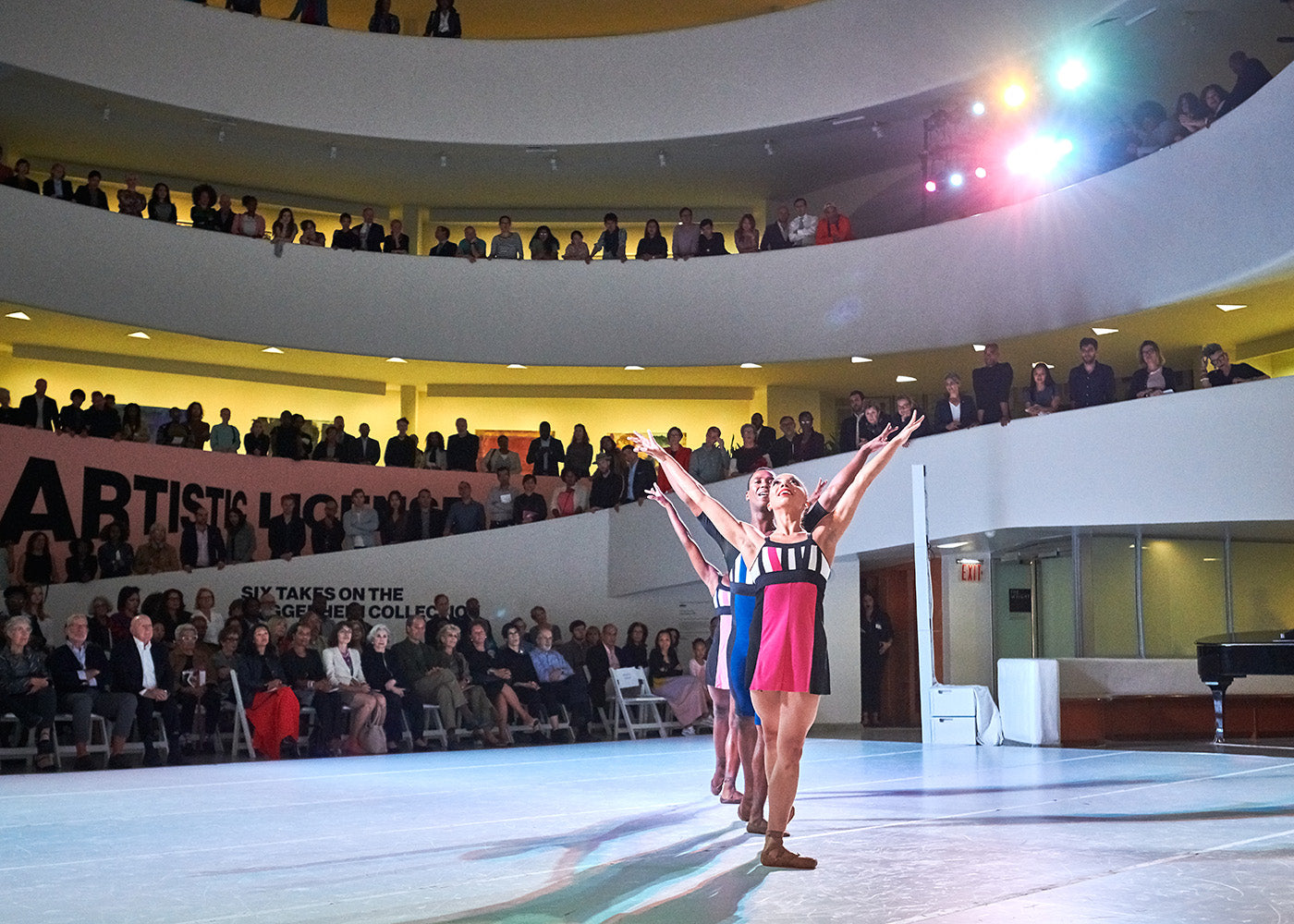What were your first seasons like and how did the organization evolve?
When I started, the organization was a half million-dollar budget and we would do 15 to 18 programs a year, really based on Mrs. Cronson’s network. That was the case from 1984, when the program started, into 2010. I did my grad work at NYU in performing arts administration while I was working at Works & Process, and I was the first arts administrator on staff through the founder transition as Mrs. Cronson became more senior and started to experience dementia.
We went through a few key pivotal moments. First, we went from a program that was predominantly funded by either Mrs. Cronson personally or the Peter Jay Sharp Foundation (which was the foundation of Mrs. Cronson’s brother) to doing things like applying for foundation grants and starting a Friends Program, both of which enabled us to grow our resources. When the Peter Jay Sharp Foundation announced that they were sunsetting all grantmaking and closing, they gave us three years’ notice. They said, “You better raise the money, or you’re going to have to contract.” So we kept on raising more money and doing more programs and expanding.
In 2017, Mrs. Cronson turned 90. I stepped up into a leadership vacuum, and we commissioned works from Daniil Simkin and Michelle Dorrance for the rotunda for her birthday celebration. We really got to spend a lot of time with artists [through their residencies in the rotunda]. That was when we realized we can resource creative process in a much bigger way. The rotunda was so magical. It also made us realize that there’s so many dance traditions that come from the circle: social dance and street dance. The theater of the Guggenheim itself is really trying to break the proscenium. It’s a thrust stage, it’s a circular space—the aisle is flush with the stage floor and literally wraps itself around the audience.
And that’s when we said, “We’re going to expand the dance ecosystem through the rotunda.” We met the dancers with Dorrance Dance and Music From The Sole. We met Caleb Teicher and they wanted to put social dance onstage but also then involve the audience. We provided “Swing Out” with its very first residency. Ephrat [Asherie] said she wanted to work on a project that was intergenerational, that celebrated New York City club culture, and Chris Celiz was sharing with us a project called “The Missing Element” that he and Anthony Rodriguez were cooking up to bring beatboxers and street dancers together to collaborate rather than compete. So we had a lot of these pandemic hits. And by this point, we were already partnering with residencies like Lumberyard and Kaatsbaan.
But what about the pandemic—how did that affect this trajectory?
Our response was two things. One, we’re never going to cancel on artists—Mrs. Cronson would just kill me. This ecosystem that exists, it exists because of artists. (And that’s why the staff of Works & Process hasn’t grown because we really devote most of our resources to paying artists.) And we paid everybody $500 for virtual commissions under three minutes. By the end of March, we had put a call out and started to premiere these virtual commissions. We realized we couldn’t present performances, but we could still support creative process. That’s when I reached out to Mount Tremper Arts and Petronio and Kaatsbaan and I was able to access rapid testing. I got my hands on Tyler Perry’s bubble protocol for film. By August of 2020, we were putting artists in these bubble residencies. We had saved for a rainy day and, by anybody’s definition, this was a rainy day.
Fortunately, the Mellon Foundation and the Doris Duke Foundation saw the work that we were doing, and they reached out to us. Between them, we got $750,000 to continue these bubble residencies from August of 2020 into June of 2021. The wakeup call was, “Wait, we don’t have to be at the Guggenheim.” The Guggenheim was closed, like so many organizations. We started to build these partnerships with residency centers and with Lincoln Center and the New York Public Library for the Performing Arts. Eventually the Guggenheim came around, and we were the first organization permitted by New York State to reopen live indoor performances in March 2021 [after intense lobbying of the governor].
I think another prevailing theme [that helped through this time] was Mrs. Cronson hated to take no for an answer. And I definitely inherited that. We’re always going to try to find the yeses.













What a great interview Candice! I was a participant in early W&P shows when Duke was pretty green, but even then his intelligence, enthusiasm, and work ethic were as clear as day. Kudos Duke for your astonishing and wonderful accomplishments!